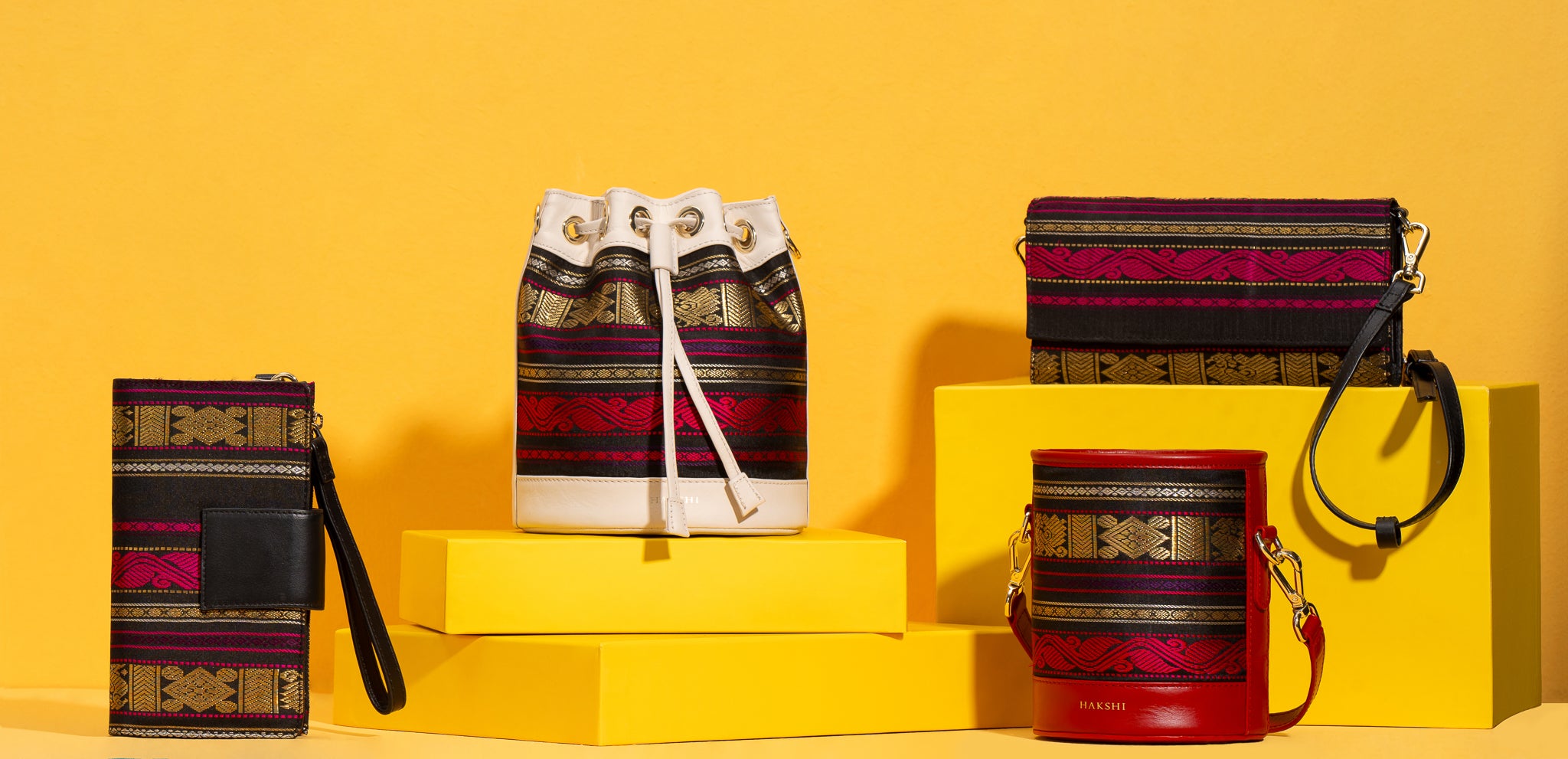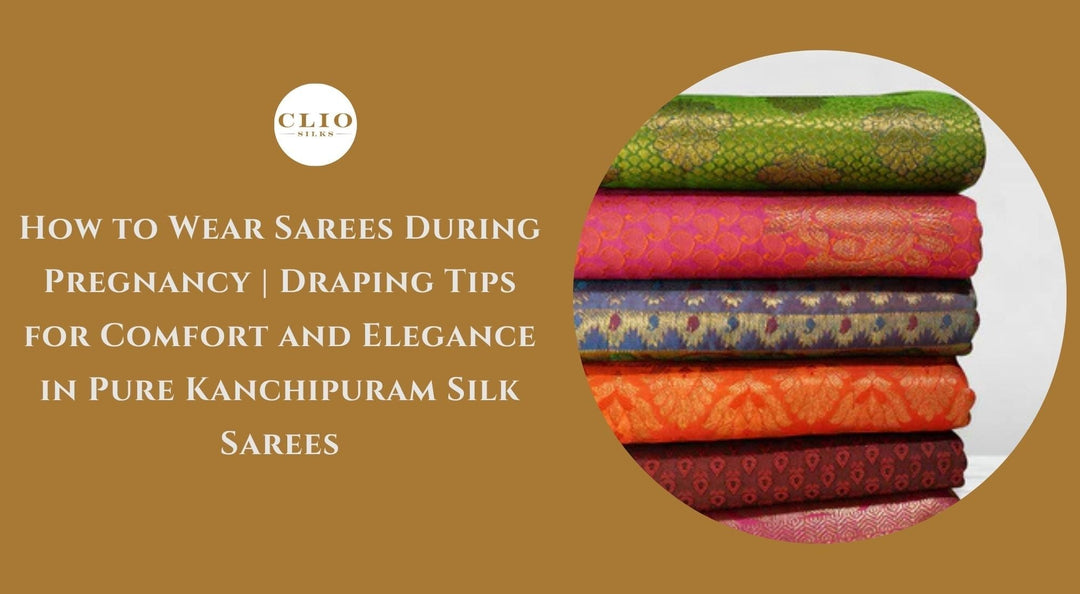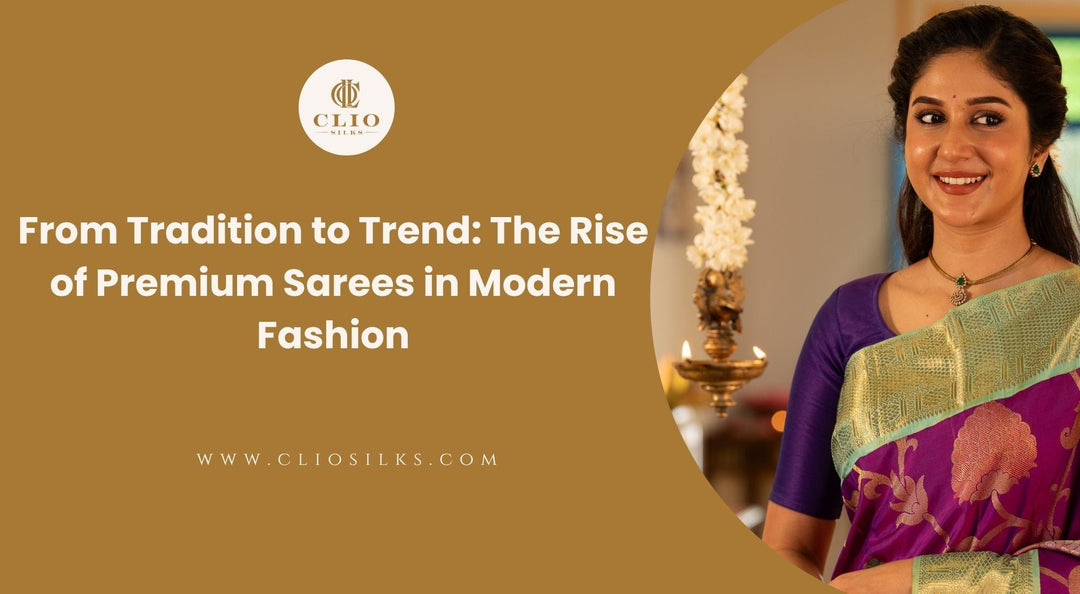Dyeing the Divine: The Art and Process Behind Kanchipuram Silk Colors
The grandeur of a Kanchipuram silk saree lies not just in its intricate weaving but also in its deep, vibrant colors. From rich maroons and royal blues to soft pastels and radiant golds, each hue is a celebration of tradition, culture, and craftsmanship. But have you ever wondered how these vivid colors come to life? At Clio Silks, we take pride in preserving the centuries-old dyeing process that gives Kanchipuram sarees their signature brilliance.
1. A Sacred Start: Choosing the Right Yarn
Before dyeing begins, the silk yarn—usually mulberry silk—is thoroughly washed to remove natural gum (sericin) and impurities. This allows the dye to penetrate deeply, ensuring long-lasting color. Only pure and high-quality silk is used for authentic Kanchipuram sarees, enhancing the vibrancy of the final result.
2. Preparing Natural & Chemical Dyes
Traditionally, natural dyes were used, extracted from plants, bark, flowers, and roots. However, modern-day Kanchipuram sarees often use AZO-free chemical dyes for better consistency, durability, and a wider color range. At Clio Silks, we maintain a careful balance respecting tradition while embracing safe, eco-conscious innovations.
3. The Dyeing Process: A Dance of Precision and Skill
The yarn is immersed in large dyeing vats, where it soaks in the prepared dye solution. Depending on the shade required, this step is repeated multiple times. Each dip is carefully timed and controlled—too short, and the color won't stick; too long, and the silk could lose its natural sheen.
Key Steps in Dyeing Include:
-
Boiling the yarn with dye at a consistent temperature
-
Manual stirring to ensure even absorption
-
Drying the yarn in the shade to preserve its luster
Experienced artisans often gauge the color by eye—an art passed down through generations.
4. Post-Dye Care: Fixing the Color
Once dyed, the yarn is treated with a fixative to ensure the color doesn’t bleed or fade. After drying completely, it’s twisted into bobbins, ready to be woven into sarees with zari.
At Clio Silks, every dyed yarn goes through a strict quality check to ensure consistency and brilliance in every saree we craft.
5. Why It Matters: Color Is Culture
In Kanchipuram traditions, each color carries meaning—red for prosperity, yellow for sanctity, green for fertility. The dyeing process isn’t just about appearance; it’s about preserving a visual language that speaks of rituals, weddings, and stories passed through silk.
Conclusion:
The dyeing of Kanchipuram silk is more than a technique—it's an art form, lovingly preserved by artisans who treat every thread like a divine offering. At Clio Silks, we honor this legacy by crafting sarees that are not just beautiful but deeply rooted in cultural excellence.
Explore the timeless beauty of hand-dyed Kanchipuram silk sarees at Clio Silks.
Shop now and add a splash of heritage to your wardrobe.
Kanchipuram silks sarees | Pure Zari kanchipuram silk sarees | Brocade Kanjivaram silk sarees | Traditional kanchipuram silk sarees | Borderless Kanjivaram silk sarees | Classic kanjivaram silk sarees | Banaras silks | Soft silk sarees | Checked Kanjivaram silk sarees | Silk mark certified sarees | Ikat Sarees | Wedding Kanchipuram Silk Sarees | Soft silk sarees | Raw Silk Sarees | Gadwal Silk Sarees






Leave a comment